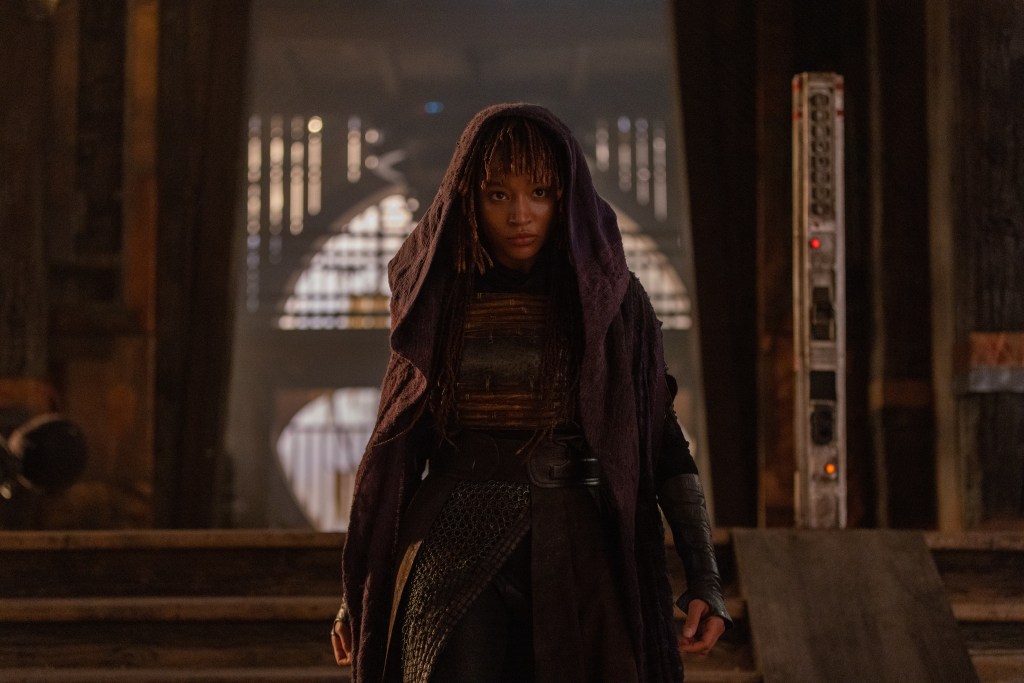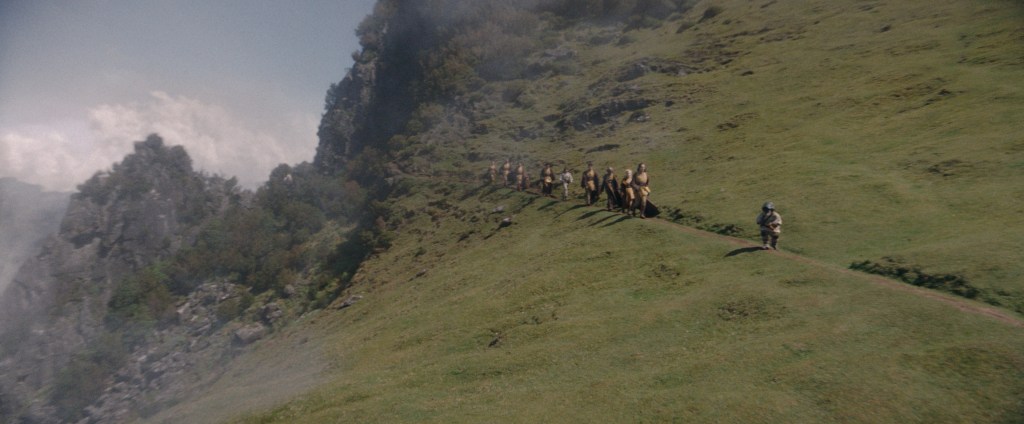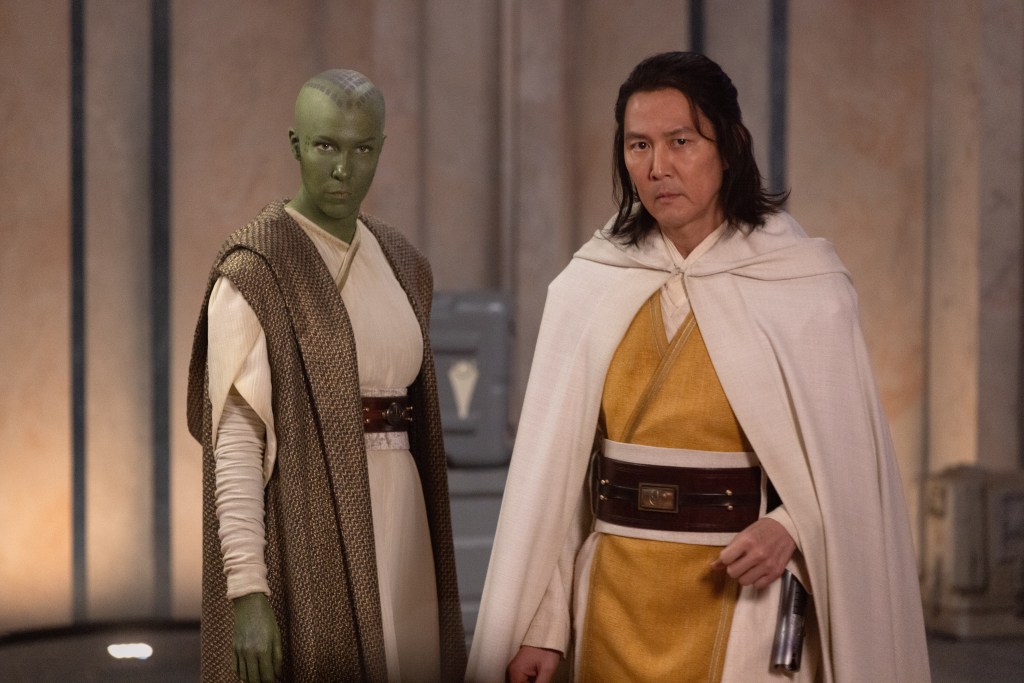The Acolyte is, simultaneously, both the sort of show many Star Wars fans have been craving and the kind of show some others feared would be the end-point of Disney‘s ownership of Lucasfilm. It’s completely unbound by Skywalker saga continuity (save a background cameo by Plo Koon), set in an entirely different time period, and although it ties into several comics and novels, it does not depend on any knowledge of them. It is also unapologetically female-centric and features the most significant openly queer couple in any live-action Star Wars media. It’s no accident that the show’s release ties in with Pride month, and it’s going to make a lot of people happy, while a vocal segment will inevitably, unimaginatively parrot the South Park special’s line about Kathleen Kennedy. (Not repeating it here. Use Google if you must.)

Star Wars shows have a pattern of changing course mid-way, so please keep in mind that this review covers four of the eight episodes. (What would Andor be without its prison section?) So far, however, it’s off to a better start than any of the live-action Disney+ shows since The Mandalorian. There’s a tendency to blow most of the budget in the first episode, and The Acolyte avoids this, spreading the wealth around to create an open universe in which anything seems possible. Given what we see onscreen, it clearly features heavy CG, yet if it’s using the Volume rather than locations, someone with better eyes than mine will have to be the one to detect it.

Disney+ Has the Best Bundle in the Business
Sign-up today for access to Disney+, Hulu, and ESPN+
Learn MoreSign-ups support Superhero Hype
via affiliate commission
Matrix Reloaded
Budget isn’t everything, of course, but the first episode opens on a sweet-spot sequence that mixes western, martial-arts, and the inevitable spin on the franchise’s trademark creature cantina. Amandla Stenberg‘s Mae, in purple and black robes and masked as if for a pandemic, confronts Jedi Master Indara (Carrie-Anne Moss) with, let’s just say, wildly differing opinions on an event in their shared past. Words make way for kicks in a battle that consciously evokes Trinity’s first big action sequence in the Matrix, albeit with roles reversed. It ends with Mae on the run and the Jedi’s Most Wanted list.

When they catch up to her, however, she seems to answer to the name of Osha and has no idea what they’re talking about. Far from being any kind of assassin, she’s a space mechanic, and because this is sci-fi, they say it “mech-nic” just to be futuristic or something. Years ago, Osha was a Jedi Padawan, but she walked away from the order to live a more normal life. It seems like a bit of a silly joke to have a character named Osha fix and make things safer for a living, but we later learn it’s an abbreviated nickname, as is “Mae.” And hey, it’s no sillier than Elan Sleazebaggano or Nute Gunray.
Unclear, the Future Is
Is Osha developing a second personality? Is she lying? The question resolves surprisingly quickly in the first episode, but no spoilers here. Suffice it to say early descriptions of this series as a murder mystery are off-base, as battle lines get quickly drawn. It’s the backstory, fleshed out in the third episode, that makes it interesting, In a galaxy where the Force provably exists, we finally see a different religious-spiritual take on it, all as part of a matriarchal society outside the Republic’s jurisdiction, yet still apparently persecuted by the authorities.

It’s entirely possible that the show’s second-half episodes will once again simplify the conflict into Jedi and Sith-adjacent factions, as a masked, black-clad antagonist with a red lightsaber is obviously pulling some of the strings. Their identity seems obvious, but who knows? We all had ideas about who Marrok really was in Ahsoka, only to have him revealed as a magical cloud of corpse gas. For now, at least, the show clearly wrestles with issues of identity, societal misogyny, religious homogeneity, and nature versus nurture. Historically, Star Wars movies tend to be unambiguous in resolution, while TV shows that expect a second season leave a lot hanging. The Acolyte appears right now to be going for a “both sides have a point” theme, but the resolution, or lack thereof, will color that immensely.
Heart and Sol
The High Republic era, a century or so before the era of the Empire, looks pretty much the same as what we’re used to, other than the fact that Jedi prefer whites and yellows and only don brown robes on away missions. There is a Wookiee Jedi, played by designated Wookiee actor Jonas Suotamo, but his makeup leaves a little to be desired, and he’s more significant to the plot when he’s pointedly missing than when he’s onscreen. Lucasfilm’s likely to sell plenty of merch on his back nonetheless, but in terms of impact, he’s more baby Ewok than Baby Yoda.

Squid Game star Lee Jung-jae makes the biggest impression as Jedi Master Sol, former and possibly future mentor to Stenberg’s protagonist. He exudes fatherly concern most of the time but stiffens up to unleash his inner Miyagi-do when necessary. Moss is all of the badassery with far less of the warmth and still has all the right martial arts moves; unfortunately, she’s not in the show as much as we’ve been led to believe.
It’s on Stenberg to carry the show as lead, and she does a reasonable job given all the exposition she has and all the range and ambiguity she has to play. It’s crucial that her costars offer strong support for now, though she’ll need to really run with the ball later. It’s really tough to say more without spoiling, but she does effortlessly make at least one high concept play convincingly. Her more stable Jedi counterpart, Dafne Keen, who still looks like a kid despite being 19 now, offers contrasting calm through Cheetara makeup.
Enchanted
Leah Brady’s less strong as young Mae/Osha, though the flashback episode, directed by After Yang’s Kogonada, is transfixingly immersive into a new world, centered on a power couple, Aniseya (Jodie Turner-Smith) and Koril (Margarita Levieva), who prove bewitching in more ways than one. Known for his analytical video essays, Kogonada approaches the assignment as a cultural documentary, and it works. Episodes directed by showrunner Leslye Headland and Alex Garcia Lopez are more classic Star Wars: the Jedi Temple, and the George Lucas-style wipes are as we remember and want them. Alien characters, from species both familiar and not, aren’t forgotten. Disney fans may note that a mouse-like tracker who’s great at detecting things is named Basil.

Now that we’ve mostly exhausted every possible single-climate planet in the Star Wars galaxy, some worlds have a bit of a sameness to them, so it’s nice to have onscreen titles naming them all. Key plot points, likewise, sometimes seem to reach their limits in space martial-arts westerns, so at least two plot twists felt beyond obvious. That said, the new characters came across as fully developed and fun, and even if the central mystery semes eminently guessable, the addictive story momentum is going to make the waiting for episode 5 pretty tough around here.
(Semi) Final Verdict:
There’s always time to mess things up — looking at you, Willow TV series! — but The Acolyte, so far, is a great Star Wars show with no inevitability to its endpoint and minimal fan service. It already seems to involve more new worlds and spaces than the sequel trilogy, and its main characters add a nice new variety to the franchise’s legacy of heroes.
If you don’t want that, here’s some cheap advice: don’t watch!
Grade (so far): 4/5
The first two episodes of The Acolyte debut June 4th on Disney+




